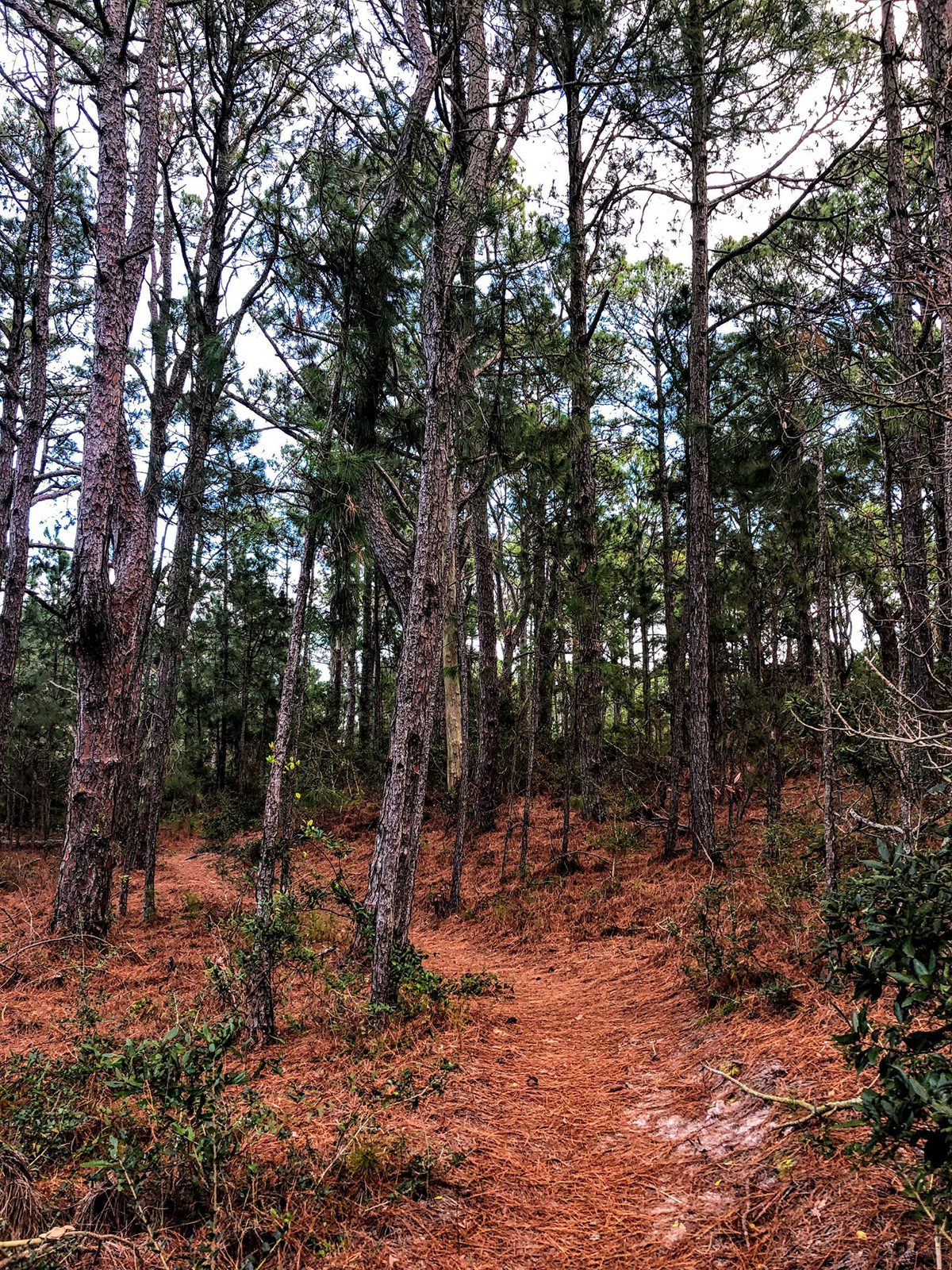
Reprinted from the Ocracoke Observer.
Negative ions caused by crashing water can elevate our feeling of well-being, and so, apparently, can walking in the woods.
Sponsor Spotlight
A growing number of studies show that when people are exposed to negative ions — electrically charged particles that occur when air is under the influence of energy sources such as crashing waves or waterfalls — they feel better, owing to negative ions raising the brain’s serotonin (happy hormone) levels.
Apparently, forest trees can also impart beneficial substances.
According to an April 2021 New York Times article, in the 1980s, researchers in Nagano, Japan, found that the practice of spending time in forests lessens stress, boosts immunity and lowers blood pressure.
Subsequent studies showed that soaking up the forest environment reduces cortisol (the body’s primary stress hormone) and activates the parasympathetic (self-healing) nervous system.
Sponsor Spotlight
According to some reports, breathing in phytoncides, the aromatic oils released by trees, can increase the number of the body’s natural killer cells (a type of white blood cell crucial to the immune system that can limit the spread of microbial infections and tumors).
So “forest bathing” has become a thing, especially in Japan, where it is called Shinrin–yoku and where nature therapy has ancient roots.
For a recent article on forest bathing, visit www.japanesegarden.org based in Portland, Oregon.
You don’t need to get naked, put on your swimsuit or get wet during a nature “bath” because you’re bathing in the energy and clean air while walking in the woods.

On Ocracoke, one can experience this along the mile-long Hammock Hills trail across from the National Park Service campground.
A refreshment if you will.
“That’s exactly how I feel,” said islander Barbara Adams, who visits the trail just about daily with her dog. “I’ve always loved walking in the forest. Hammock Hills is just so fresh.”
This trail was heavily damaged during Hurricane Dorian in September 2019 and the wooden enhancements — some bridges and the look-out platform at the Pamlico Sound — have not yet been repaired.
And they might not be replaced since the trail has been thrice flooded and damaged in hurricanes Matthew in 2016, Florence in 2018, and most recently Dorian.
Cape Hatteras National Seashore Superintendent Dave Hallac said that his staff is taking a longer, open-minded look at the trail.
“It is, in fact, a hiking trail, and hiking trails get wet and flooded sometimes,” he said. “For some folks, that’ll be part of the experience and for others, it just might not be able to be used all the time.”
So, they’re looking for a less complex and less costly, long-term way to manage it, he said.
Nevertheless, the trail is open and available for breathing in the pine-scented atmosphere.
In the warm months, arm yourself with bug spray.
In the fall and winter, listen for the high pitched “yank-yank” call of the red-breasted nuthatch, a northern visitor that loves longleaf pine trees.
A ranger-guided, 60-minute nature walk on the half-mile trail will be held at 8:30 a.m. Tuesday, Sept. 20. Attendees are encouraged to bring bug spray.
This story is provided courtesy of the Ocracoke Observer, a newspaper covering Ocracoke island. Coastal Review is partnering with the Ocracoke Observer to provide readers with more environmental and lifestyle stories of interest along our coast.







